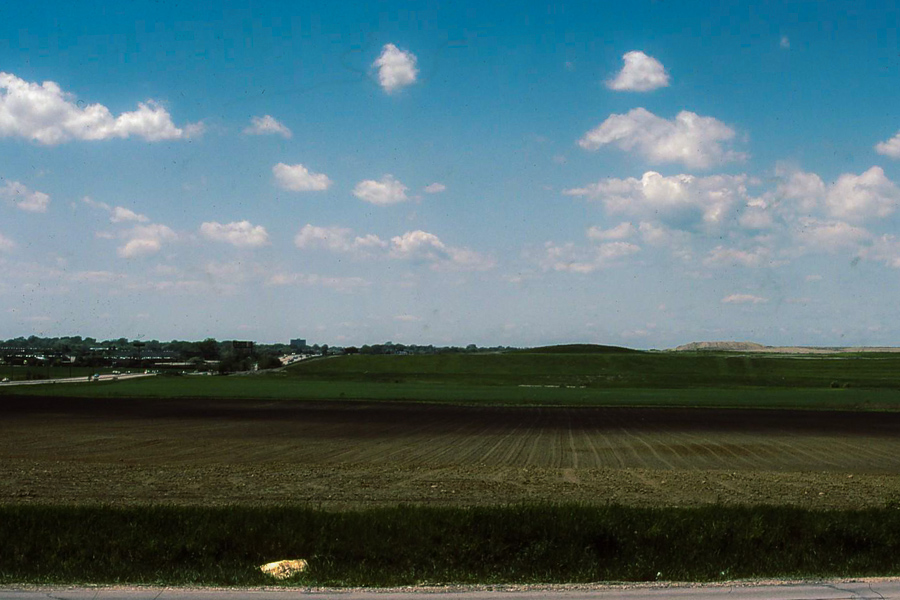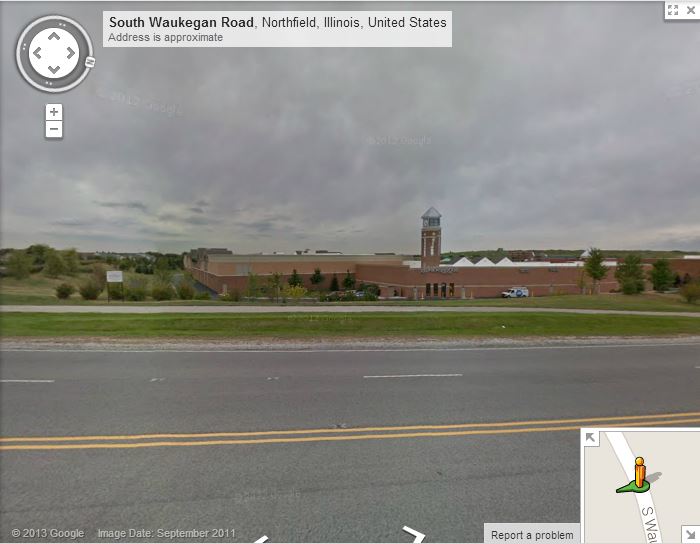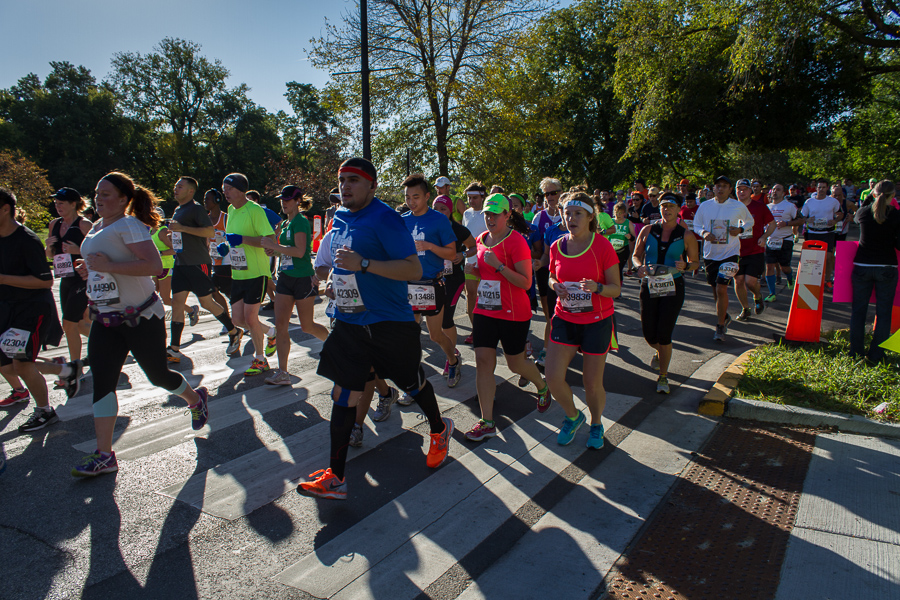Since we moved the end of Daylight Saving Time to the first week of November, sunrises at the end of October are later than those in mid-December. Yesterday's sunrise was the latest sunrise in a year, and will be the latest until 2016. (The sunrise on 6 November 2010 was the latest until 2021, so it really could be worse.)
In Chicago this morning, the sun rose at 6:26, the same time it rose on September 12th. It won't rise this early again until March 3rd—but then a week later we shift the clocks again so we get another 6:26 sunrise on April 6th.
National Geographic had not one but two articles on DST this weekend. Any conclusions? Some people don't like it and others do. The only conclusion I draw from reading both is whether DST benefits you depends on a lot of factors, geography preponderating.
I still don't know why we moved the fall switch from end of October to beginning of November in 2007. We want daylight for Hallowe'en? I really, really hate getting up before dawn, which wouldn't happen before Thanksgiving if we still used the pre-1986 (1st Sunday in October) rules; even the 1986-2006 regime (4th Sunday in October) would minimize it. Europe, including the UK, change their clocks the last Sunday in September and the last Sunday in March. That seems to work best for northern, cool climates—like Chicago. Maybe Illinois should go its own way, then?
...brings us Wait Wait...Don't Tell Me!, the NPR news quiz hosted by actor and playwright Peter Sagal. Last week, one of the panelists presented an extended joke about Poland. Never mind that the panelist is probably of Polish descent; the piece annoyed the Polish consulate:
Peter Grosz, an actor and TV writer who has appeared as a panelist and guest host on "Wait Wait," offered a supposed news item referencing a joke asking how many Poles it takes to screw in a light bulb.
Host Peter Sagal revealed the light bulb tale wasn't true, but instead another item about road-crossing chickens was the real news. Listeners later called "Wait Wait" and the Polish Consulate to complain that the joke was in poor taste.
In a letter to Danforth, Paulina Kapuscinska, consul general of the Republic of Poland in Chicago, said the joke played up false stereotypes of Poles and Poland. It presented National Public Radio, which distributes the show, as "promoters of prejudice," and such jokes "are some of the most unsophisticated of jokes, which offend the intellect of NPR listeners," Kapuscinska wrote.
[Show producer Mike] Danforth replied with an apology, which the Polish Consulate posted on its website Thursday.
"I can't disagree with your judgment that the content of our October 26th show was unsophisticated and insulting to the intellect of NPR listeners. I'm afraid just about everything we do on 'Wait Wait' offends the intellect of the NPR audience," Danforth wrote.
People. Please. Danforth is right; it's a comedy show. The volume of Jewish jokes that Jewish host Sagal tells every week should have been sufficient notice that maybe, just maybe, they might make fun of other stereotypes. Get over it.
The week between when we used to switch back to Standard Time and when we do so now (since 2007) makes me want to stay in bed.
This morning sunrise happened at 7:18 and will slouch out to 7:25 on Saturday morning. It's the latest sunrise we'll have for three years, and it's 45 minutes after I usually get up in the morning.
I know a lot of people prefer more light in the afternoon. I don't care, really. Sunday the sun sets at 16:42; but it rises at 6:26, and gives me another month before the sun rises after 7 again. Then, of course, there's the slog from December 2nd to February 4th...but what can you do?
Just having a moan. You can ignore this post.
Once again, here's a list of things I'm sending straight to Kindle (on my Android tablet) to read after work:
Back to work. All of you.
Northbrook, Ill., has always been a suburb. Until the end of the last century, no one had developed large hunks of the village, because two entities controlled several square kilometers of land around it. One entity, the U.S. Navy, operated an air station until 1994; the other, the Catholic Church, had a smallish farm, a convent, and a dairy barn well into the 1990s, and still owns Techny Towers, a religious retreat.
A conversation with a friend this week turned to a discussion of the Whole Foods Market at Willow and Waukegan Roads. So I dug out this photo from May 1985:

That's from the west edge of Waukegan Road, about 150m north of Willow, looking almost due west. Here's what it looks like today:

Notice that we can only see the backs of the stores from the road. All the storefronts point inward, to the parking lot. This is exactly the horror Andres Duany described in his 2000 book Suburban Nation.
When I was a kid, I looked at that huge field and imagined a college. It could have been combined with the land north of Techny Road into a neighborhood of medium-sized houses, with transit links along Waukegan and Willow. Hell, it could have been nearly anything.
Nope. Faced with 500 hectares of farmland in 2003, all the developers could see was an automobile-centric shopping plaza. The air station? Same thing. The Glen at least has a few dozen hectares of prairie preserve and a single transit stop that no one can really walk to. Otherwise, the whole redevelopment shows a staggering lack of imagination or forward thinking.
From WBEZ's Chicago History blog:
Chicago had actually started building two subways, with another tunnel following Milwaukee-Lake-Dearborn. Then the war came, and construction materials became scarce. The second subway would not be completed until 1951.
But on this glorious Saturday morning--October 16, 1943--the city was ready for a party.
Starting at 9:15, ten special trains were dispatched from ten different outer terminals along the "L" system. They carried various dignitaries to a rendevouz in the subway at State and Madison. When the lead train passed through the first underground station at North-Clybourn, it was saluted by the Lake View High School band, blasting out "El Capitan" from the platform.
One by one, the ten specials converged at State and Madison. The dignitaries got out, shook hands all around, and made a few speeches. At 10:47 Mayor Edward J. Kelly cut a ribbon strung across the northbound track. As the newsreel cameras whirled, the trains rumbled down the tracks. "This is the most significant event in Chicago history to date," the mayor declared.
They've even got a video from the 1940s showing how Chicago dug the subways.
Two clients, both alike in dignity, yadda yadda yadda...so no time to read these yet:
Hello, "Read Later" button...
This is one of the best parts of living in Lincoln Park:

After watching one group of runners go up Stockton Drive, I can catch them going the other way down Clark. Even Parker gets into the action—sort of:

We had perfect running weather today, 12°C with light winds and plenty of sun. Kenyan Dennis Kimetto set a new course record at 2:03:45, which is just about 3 minutes per kilometer.
If you wondered how often people actually ride Divvy bikes, everyone's Divvy online trip summary page has the answer. They put the trip ID right on the page. My first Divvy trip, on September 18th, was #522105; this morning's was #732089. Assuming they use an ID field that auto-increments by 1 for each ride, that means Divvy users rode about 210,000 times in the past 22 days, or about 9,500 times a day (on average). That rate gives them nearly 3.5 million rides over the next 12 months.
Compare that with the CTA's 314 million bus rides and 231 million train rides, though. The 79th Street bus had 10 million rides last year; the #36 bus (one of five that stop near my house) had 5.8 million; most of the 150-odd routes had over a million. So will Divvy actually eat into CTA ridership? Not for a while.
I'll look for more official sources of Divvy participation, especially on revenue.